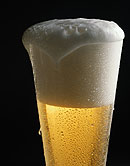
FRIDAY, Aug. 16 (HealthDay News) — Five brands accounted for the largest amounts of beer consumed by people before they were treated for injuries at an emergency department in a large U.S. city, according to a new pilot study.
Of the five brands (Budweiser, Steel Reserve, Colt 45, Bud Ice and
Bud Light), three are a type of “malt liquor,” which has a higher alcohol content than regular beer.
Four brands of malt liquor (Steel Reserve, Colt 45, Bud Ice and King Cobra) accounted for 46 percent of the beer consumed by the patients, even though those four brands account for only 2.4 percent of beer consumed in the general population.
For the study, researchers interviewed patients at the Johns Hopkins Hospital emergency department in Baltimore on Friday and Saturday nights between April 2010 and June 2011. Of the 105 patients who admitted to drinking before they were injured, 69 percent were men.
The study, thought to be the first of its kind to assess injured ER patients’ alcohol consumption by brand and type, was published online Aug. 1 in the journal Substance Use and Misuse.
The researchers also found that the proportion of vodka, gin and brandy/cognac consumed by ER patients was higher than the proportion of those drinks consumed in the general population.
“Recent studies reveal that nearly a third of injury visits to Level I trauma centers were alcohol-related and frequently a result of heavy drinking,” lead author David Jernigan, director of the Center on Alcohol Marketing and Youth at the Johns Hopkins Bloomberg School of Health, said in a Hopkins news release.
“Understanding the relationship between alcohol brands and their connection to injury may help guide policy makers in considering taxation and physical availability of different types of alcohol given the harms associated with them,” he explained.
The next step in this line of research would be to conduct a larger study in multiple ERs and cities, the study authors suggested. They added that policy changes from this research could include: requirements for clear labeling of alcohol content on malt liquor beverages; limits on malt liquor availability and marketing; and graduated taxation of beer based on alcohol content to discourage people from drinking beer with higher alcohol levels.
More information
The U.S. National Institute on Alcohol Abuse and Alcoholism outlines the health effects of alcohol.
Copyright © 2025 HealthDay. All rights reserved.

